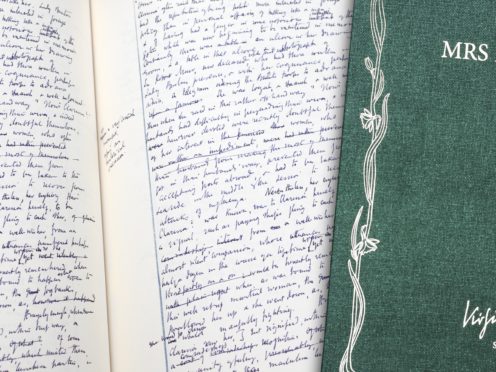The original hand-written manuscript of Virginia Woolf’s novel Mrs Dalloway is to be published for the first time, revealing numerous changes the author made to one of her most famous works.
The draft, which was penned in purple ink in three notebooks between June 1923 and October 1924, shows she changed the title from the original name The Hours and also altered the first sentence to eventually read: “Mrs Dalloway said she would buy the flowers herself.”

It also shows her notes in the margins, including “a delicious idea comes to me that I will write anything I want to write”, and indicates her initial intention to have the main character Clarissa Dalloway take her own life.
It shows the pencil margin she drew on each page of the notebooks, in which she recorded the date, word count and personal memos and notes for her essays.

It reveals an alternative opening describing the bells and temples of Westminster, which was revised in the second notebook to the well-known inaugural line, and also shows she hesitated over what to name the book, calling it The Hours in the first notebook, The Hours Or Mrs Dalloway in the second and then settling on Mrs Dalloway, or The Hours in the third.

In a diary entry for October 1922, Woolf notes that she planned to write a novel about “Mrs Dalloway seeing the truth”, in which her heroine was supposed to commit suicide but in her notebooks the author develops the story of shell-shocked war veteran Septimus Warren Smith, who ends up killing himself instead.
In 1941, after Woolf’s death, her husband Leonard Woolf sent the manuscript to her friend and lover Vita Sackville-West, who kept it until her own death in 1962.
He described the notebooks in which Woolf wrote her text as bound in the “coloured, patterned Italian papers” of which she was very fond.
A year later the work was purchased by the British Museum Department of Manuscripts, now part of the British Library.

The manuscript will be published in June by Parisian publishers SP Books and will be accompanied by essays from leading Woolf expert Helen Wussow and author Michael Cunningham, who wrote The Hours, which was based on the life Virgina Woolf and inspired by Mrs Dalloway.
